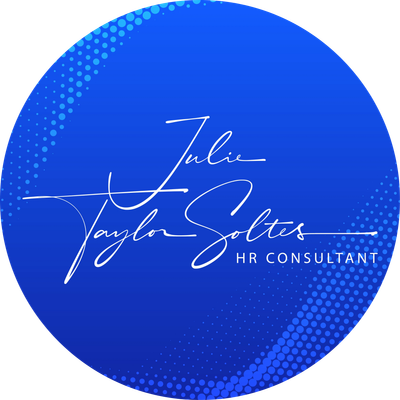The Silent Profit Killer: How People Problems Drain the Bottom Line

Business leaders live and breathe numbers. Sales targets, margins, revenue streams, and forecasts dominate strategy sessions. But behind the spreadsheets, a silent profit killer is working against many organizations — and it rarely shows up until the damage is already done. That hidden threat? People problems. Turnover, disengagement, poor hiring, inconsistent leadership, and compliance missteps don’t just create frustration in the workplace. They create financial leaks that silently eat into profitability. Left unchecked, these issues can cost businesses more than market fluctuations, rising costs, or missed sales. Let’s break down where those losses happen — and what to do about them.
1. Turnover: The Hidden Six-Figure Expense
Most leaders underestimate just how expensive turnover really is.
- Recruiting, advertising, and recruiter fees quickly add up.
- While positions sit empty, productivity drops and deadlines get pushed.
- The rest of the team picks up the slack, leading to overtime, burnout, and even more turnover.
- When a replacement is hired, they often take 6–12 months to fully ramp up to the productivity level of the employee who left.
Research consistently shows that replacing a mid-level employee can cost 1.5–2x their annual salary. For leadership roles, the cost is often much higher.👉 Imagine a company with 200 employees and a 20% annual turnover rate. If the average salary is $50,000, the hidden turnover cost could easily exceed $3 million per year. That’s not a minor HR issue. That’s a direct hit to profitability.
2. Disengagement: Payroll With No ROI
If turnover is the obvious leak, disengagement is the slow drip that drains performance over time. Gallup has found that only about 33% of employees are engaged at work. The rest are either not engaged (doing the bare minimum) or actively disengaged (hurting performance).What does disengagement cost?
- Lower productivity per person
- Increased mistakes and errors
- Poor customer service experiences
- Missed innovation opportunities
In fact, Gallup estimates disengagement costs U.S. businesses $450–550 billion annually. For an individual company, that might mean 30–40% of payroll dollars are producing little to no return. It’s like paying for a machine that runs at half speed.
3. Compliance Missteps: One Mistake Can Cost Millions
Compliance is often dismissed as “just paperwork.” But one poorly handled termination, a missed ADA accommodation, or an ignored harassment complaint can trigger:
- Lawsuits
- Government fines
- Damaging publicity
- Morale breakdowns across the team
The cost of litigation can reach six or seven figures. But the bigger loss is often reputation and distraction — leaders pulled away from running the business, employees losing trust, and customers questioning the company’s values. Compliance isn’t about checking boxes. It’s about protecting the business from catastrophic financial and cultural loss.
4. Leadership Gaps: Managers Make or Break Performance
The saying is true: “People don’t leave companies — they leave managers. ”A weak or untrained manager can undo even the best strategy. Signs of leadership gaps include:
- High turnover in specific departments
- Toxic workplace culture
- Inconsistent accountability
- Poor communication across teams
On the flip side, effective managers are performance multipliers. They increase retention, inspire engagement, and unlock discretionary effort — the extra energy employees give when they feel truly connected to their work.Investing in leadership development may not show an immediate ROI on a spreadsheet, but over time, it can be the most profitable investment a company makes.
5. The Cost of Inaction
One of the biggest risks leaders face is not recognizing people problems until it’s too late. Unlike a missed revenue target, these issues don’t always scream for attention — they simmer quietly. But left unchecked, they compound. High turnover leads to low morale. Low morale leads to disengagement. Disengagement leads to mistakes, compliance issues, and lost customers. By the time leaders connect the dots, the financial and cultural damage is already done.
Turning HR Into a Profit-Protection Strategy
Here’s the good news: people problems are preventable. With a proactive approach, HR shifts from a “necessary expense” to a strategic profit protector. Here are some ways businesses can stop the leaks:
- Build strong onboarding & retention systems: Get employees connected to the mission quickly and reduce early turnover.
- Develop managers as leaders: Equip supervisors with skills in coaching, accountability, and communication.
- Create a culture of engagement: Recognize contributions, align roles with strengths, and give employees a voice.
- Stay proactive with compliance: Document policies, train managers, and address issues before they escalate.
- Measure people metrics like financial metrics: Track turnover, engagement, absenteeism, and productivity as closely as you track revenue.
Final Thought
Every company has revenue and profit goals. But without aligning people strategies to those goals, leaders are leaving money on the table. The silent profit killer isn’t the market, competitors, or even rising costs. It’s the people problems businesses overlook.HR done right isn’t a cost center — it’s a profit driver. If your business is ready to stop the leaks and unlock the full potential of your people, let’s talk. This is exactly where strong HR consulting makes the difference between surviving and thriving.
